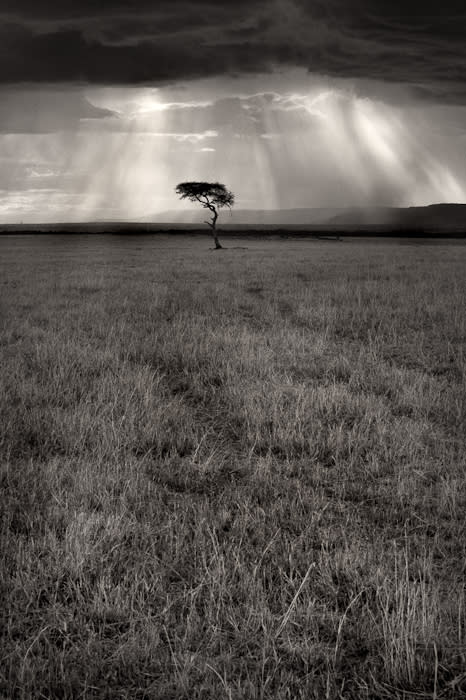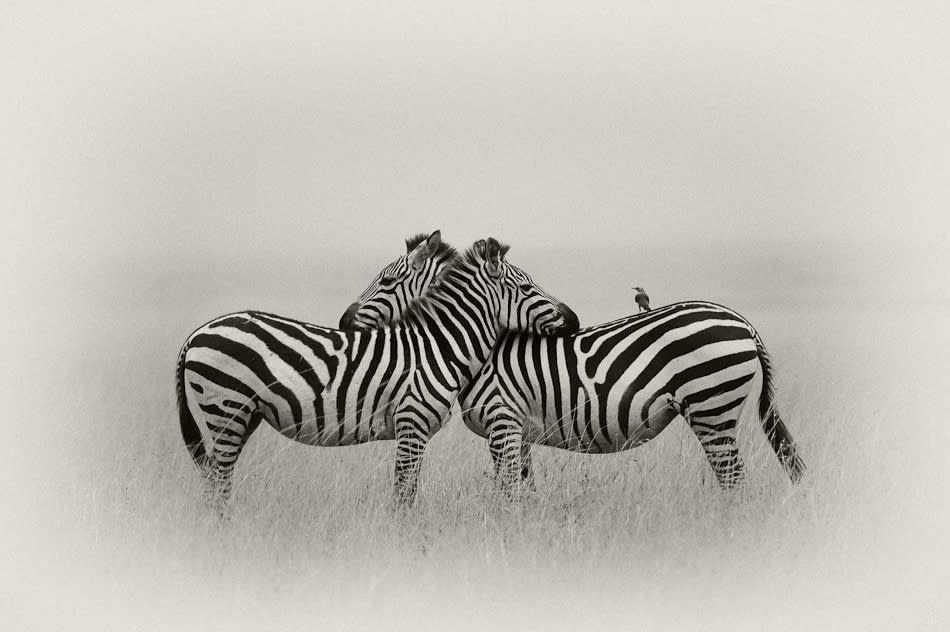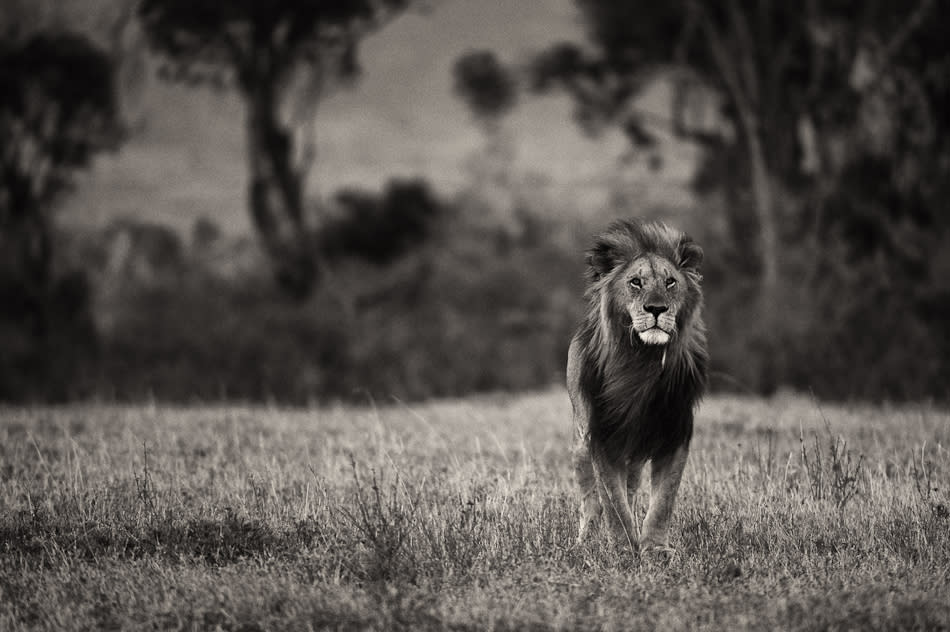 Yahoo Lifestyle
Yahoo LifestyleMaasai Mara - The Greatest Wildlife Spectacle on Earth
The Maasai Mara National Reserve in Kenya is witness to the most spectacular wildlife migration on earth. Wildlife photographer KALYAN VARMA captures the poetic beauty of the Mara in monotone.

Click on the numbered links below to view these fascinating images. (All photographs © KALYAN VARMA. Reproduced with exclusive permission)

A herd of African elephants under a dramatic sky makes for an imposing sight. © KALYAN VARMA

Black rhino in Maasai Mara. Africa has two species of rhinoceros -- the White or Square-lipped Rhino and the Black or Hook-lipped Rhino. Both are highly endangered and protected in Africa, though many still fall to hunters. Rhinos are poached for their horns, which are believed to possess aphrodisiac properties. The horn, which is in fact made of matted hair-like tissue, fetches insanely huge prices in the black markets of China and Southeast Asia. Rightly, conservationists believe that for the killing to stop, the buying must first be stopped. © KALYAN VARMA

"The tree where man was born." The continuity of the savanna, the great grassy plain of the Masai Mara, is broken by these hardy acacia trees. © KALYAN VARMA

Three cheetah siblings, known locally as Honey's Boys, bring down a wildebeest. The migration is eagerly awaited by lions, cheetahs, leopards and hyenas, for it brings a treasure trove of food for them. Most wildebeest calve on the way to the Mara and the young ones become easy prey for opportunistic predators. © KALYAN VARMA

Cape Buffalo in Maasai Mara. Among the most impressive of herbivores, buffaloes are strong and formidable. They are known to be unpredictable and aggressive, often chasing away lions and other predators. Big game hunters of yore wrote that bullets ricocheted off the animal's great horns. © KALYAN VARMA

Two zebra strike a pose in Maasai Mara, watched by an oxpecker, a bird that frequently follows grazing animals seeking out insects in their skin. Of the three species of zebra in Africa, this (the Plains Zebra) is the most common. The other two -- the Grevy's Zebra and the Mountain Zebra -- are endangered. © KALYAN VARMA

Elephants in the Maasai Mara. African elephants are larger than Asian elephants. There are two recognized species of African elephants -- the African Bush Elephant shown here and the smaller African Forest Elephant, which is found in the rainforests of the Congo. © KALYAN VARMA

A giraffe stands in the shade of an acacia tree in the Maasai Mara. Giraffes, the tallest land animals (adult males are up to 20 feet tall), are among the residents of the Mara. © KALYAN VARMA

The alpha male of the marsh pride, this African lion represents the majesty that has so often translated to myth and legend. Lions once ranged all over Africa and West Asia including India. Today, they are restricted to pockets in Africa and one subspecies is limited to a small sanctuary in Gujarat. Wild lions were mercilessly hunted across Africa and now remain relatively safe only in the great wildlife reserves. © KALYAN VARMA

A lone zebra stands out against a sea of wildebeest as the herd, which mixes freely, prepares for the crossing. Zebra and wildebeest usually coexist peacefully and will alert each other to the presence of predators. © KALYAN VARMA

Wildebeest drink before they ready for the crossing. The river teems with crocodiles hungrily awaiting the passage of the herd. Many wildebeest and zebra fall prey to the waiting predators but most will make it and go on to the relative safety of the grasslands where the Circle of Life continues to be enacted. Other predators such as lions, hyenas, cheetahs and leopards will stalk the sick, the infirm and the unfortunate. © KALYAN VARMA

The herd picks the narrowest bend in the swiftly flowing river to make the crossing. The cloud of dust kicked up by the hooves of so many zebra and wildebeest can be seen from many miles away. This is one of the most dramatic events of the Great Migration and has been ritually documented by filmmakers and wildlife photographers through the years. © KALYAN VARMA

A cryptically patterned sea of ungulate bodies kicks out of the water as a mixed herd of zebra and wildebeest successfully makes the crossing. The Migration is a recently relative phenomenon, dating back to the 1950s when wildebeest behavior showed a marked change following an outbreak of the rinderpest epidemic. © KALYAN VARMA

A small band of zebras makes the crossing. At the end of the season, the herds will make a return journey, following a southeasterly trajectory from the Maasai Mara in Kenya back to the Serengeti in Tanzania. © KALYAN VARMA

A close-up of an African elephant (Loxodonta africana) shows its tough wrinkled hide, which earned it the moniker 'pachyderm' (Greek for "thick skin"). Unlike in Asian elephants, female Aftican elephants also bear tusks. Like Asian elephants, African elephants continue to be hunted by poachers who supply the illegal trade in ivory. © KALYAN VARMA. Experience more wildlife images like these at Kalyan Varma's website.
Enjoy more Travel Widescreen galleries


